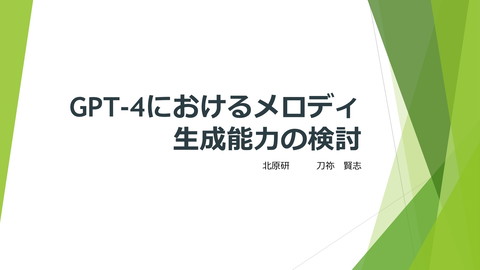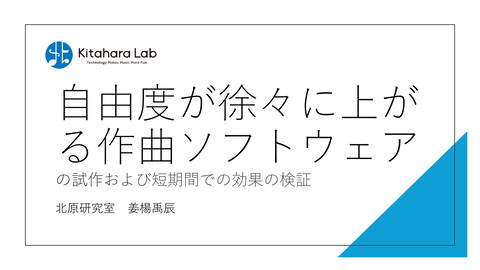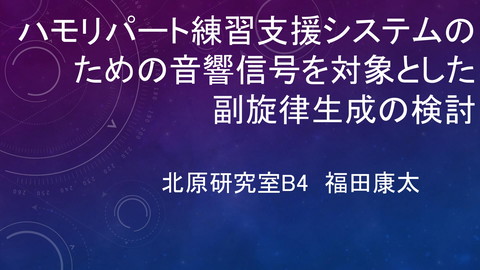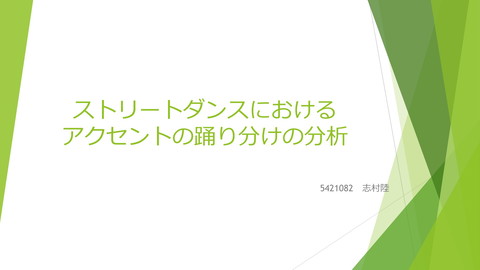A Machine Learning Approach to Support Music Creation by Musically Untrained People
>100 Views
September 30, 24
スライド概要
The document proposes a machine learning approach to support music creation by non-musicians. It describes an interface where users can edit melodies by redrawing melodic outlines or curves representing the pitch trajectory. A hidden Markov model is used to generate melodies that closely match the user's edited melodic outline while maintaining musical appropriateness, by transforming between the melody and its outline. The system aims to allow novices to input abstract musical ideas and generate pieces in an intuitive way powered by machine learning.
日本大学 文理学部 情報科学科 北原研究室。 「Technology Makes Music More Fun」を合言葉に、音楽をはじめとするエンターテインメントの高度化に資する技術の研究開発を行っています。
関連スライド
各ページのテキスト
A Machine Learning Approach to Support Music Creation by Musically Untrained People Tetsuro Kitahara and Yuichi Tsuchiya Nihon University, Tokyo, Japan How can we use computing technology to encourage music creation by novices? Issue 1 Issue 2 Human interface Automatic music generation Users need to be able to input their musical ideas in an intuitive, easy way System needs to be able to generate musical pieces from abstract / incomplete inputs Powered by machine learning Our proposal: Melody editing based on melodic outline Idea 1 Idea 2 Melodic outline Melody is represented as a curve ● User edits the melody by redrawing the curve ● Usable when the user is not satisfied with melodies generated by a music composer ● ● Hidden Markov model Estimate a sequence of notes satisfying: ● Closeness to the outline ● Musical appropriateness Mutual transformation between melody and melodic outline Transform melodic outline to melody Transform melody to melodic outline Pitch trajectory Edited melodic outline High-order coeffs. of original melody Fourier transform Fourier transform Low-order coeffs. of Extract loworder coeffs. Inverse Fourier transform Inverse Fourier transform Save for later use Hidden Markov model Do Mi Fa So Ti Ra So Re Do Mi Hidden Markov model for melody generation Key idea Emission prob. Hidden states 48 49 ,,, 84 Each state represents each note number For state si, Transition prob. Note name unigram 0.4 i Note number 0.2 0 Seq. of note numbers (musically appropriate) Emit (with random deviation) C D E F G A B M6 M7 Interval unigram 0.4 Observed signal i pitch (1-dim continuous value) Seq. of continuous pitches in melodic outline 0.2 0 Closeness to user’s melodic outline P1 M2 M3P4 P5 Musical appropriateness







